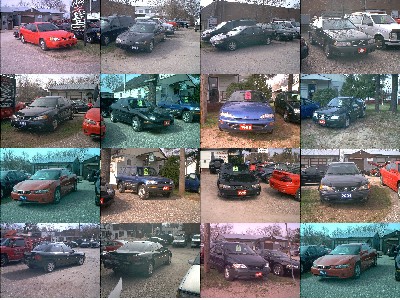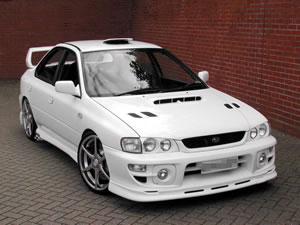Succeeding the previous VZ model, the VE marked the introduction of the fourth generation of Holden Commodore—a model line introduced in 1978. As opposed to the VZ and all models previous which used Opel-sourced platforms adapted both mechanically and in size for the local market, the VE programme is the first Commodore to be developed exclusively by Holden in Australia. Despite its status as an all-new model, engines—comprising the 3.6-litre V6 and more powerful 6.0-litre V8—have been largely carried over from the VZ series. Innovative features to help minimise export redevelopment costs, such as a symmetrical centre console housing a flush-fitting hand brake lever, facilitate the conversion to left-hand drive. Internationally, the VE is badge engineered as the Chevrolet Lumina, Chevrolet Omega and previously as the Pontiac G8 from 2007 to 2009.
Updates to the VE have come in the form of model year (MY) changes from early 2007 onwards. Typically subtle in nature, these recurring changes have involved alterations to colours and trim, increased standard equipment, and a reduction in fuel consumption. More noteworthy adjustments have come in the form of a smaller 3.0-litre V6 engine for entry-level versions and "Series II" styling revisions in late 2010.
Official manufacture of the sedan began at Holden's Elizabeth, South Australia production facility on 13 July 2006. Three days later, Holden publicly revealed the car at the Melbourne Convention Centre, broadcast simultaneously via the Internet. The launch occurred alongside that of the flagship WM Statesman/Caprice. Previous to this, Holden announced that VE station wagon and utility variants would be postponed and the VZ equivalents would remain in production. Sales of the VE-based Ute commenced on 22 August 2007. This was shortly followed by the unveiling of a Sportwagon concept, the production version of which was released in July 2008.
Holden's designers and engineers began laying down the basics of a clean-sheet Commodore sedan in 1999. In the seven years of development, the car came to be Holden's largest and most expensive project, representing an expenditure exceeding A$1 billion and 3.4 million kilometres (2.1 million miles) of testing.
In 1999 Peter Hughes, Holden's manager of exterior design, produced a two-dimensional image of a sketch drawn earlier by Michael Simcoe, Holden's design director at the time. Known in house as the "Bill of Design", the sketch formed the design basis for the production-ready car. Various elements of the sketch were changed, including the rear tail lamps, the low-profile side window cluster and the drawn out wheelbase, but the aggressive stance remained.
In 2004, just two years before the release of the VE Commodore, Holden unveiled the Torana TT36 concept car at the Australian International Motor Show in Sydney. The TT36 served as a preview of the VE and allowed Holden to gauge public reaction to its styling. Much of the Torana's styling drew on the essence of the VE's design. Some production-ready components even carried over from the TT36 including the steering wheel, the window and rear-view mirror switch cluster and the handbrake lever.
Shortly after stylists penned the first design sketches, Holden engineers began work on developing the chassis. Opel, which had provided the basis for all previous Commodore generations, ceased production of their rear-wheel drive Omega in 2003. This meant that Holden had two options: to use another GM platform, or to develop an all-new vehicle. GM's new premium rear-wheel drive Sigma platform was to see production in the 2002 Cadillac CTS. Holden's engineers were offered this platform, but decided it was not appropriate. The Sigma platform's double A-arm front suspension and extensive use of aluminium were too costly for the VE's market segment. The luggage compartment was deemed too small and the Sigma interior package could not be stretched sufficiently to become a family-sized car. In particular, the rear-seat shoulder width was too tight. These major drawbacks made Holden decide to develop an all new platform, known as the GM Zeta platform, on which a number of forthcoming GM vehicles will also be based. The Zeta suspension system comprises new double-pivot MacPherson strut for the front and a four-link independent rear setup. These replace the previous simple MacPherson strut design front and much criticised semi-trailing arm rear suspension, for improved ride and handling. Denny Mooney was appointed chairman of Holden on 1 January 2004, by which time development of the VE Commodore was well underway. Key design and engineering work was being finalised, and investment was already being made in making the tooling with which to manufacture the car. One of Mooney's priorities was to improve the perceived quality issues that surrounded the previous generations of Commodores. The interior quality benefited dramatically from this additional emphasis; Mooney pushed for panel gaps to be reduced by a further 0.5 millimetres (0.020 in) over previous targets. Smaller panel gaps are just one of the ways that Holden have developed the VE to pitch it against the European competitors. Through the use of advanced steels and intensive design, the body structure is 50 percent stiffer than the outgoing model, benefiting from noise and vibration reductions, handling and crash safety. However the new body has resulted in substantially increased weight over the outgoing model. The development of the new car led Holden to redesign the Elizabeth plant in South Australia so that entire sections of the car can be assembled off the foremost production line. This new production method allows for complete sub-sections like the engine and transmissions to be constructed seamlessly together on rigs that simplify production. This process is applied to the front-end module of the VE Commodore, consisting of the headlights, bumpers, airbag sensors and other accessory components. It can be easily removed as one-piece leading to lower repair costs and easier access to the engine bay. This design represents the first time such a method has been used within GM, and garnered the SAE Australasia's 2006 Automotive Engineering Excellence Award. A modular design structure known within Holden as "Flex Vision" has been applied to the interior where fundamentally different components such as audio units and instrument clusters can be swapped out for the different Commodore variants, creating radically varied interior look and feel without much higher costs. The upshot of this is much greater differentiation between the variants than the outgoing model creating three distinct interior looks, dubbed: Functional, Performance and Luxury. The closely related long-wheelbase WM Statesman/Caprice derivatives feature a fourth interior type referred to as Prestige.
Updates to the VE have come in the form of model year (MY) changes from early 2007 onwards. Typically subtle in nature, these recurring changes have involved alterations to colours and trim, increased standard equipment, and a reduction in fuel consumption. More noteworthy adjustments have come in the form of a smaller 3.0-litre V6 engine for entry-level versions and "Series II" styling revisions in late 2010.
Official manufacture of the sedan began at Holden's Elizabeth, South Australia production facility on 13 July 2006. Three days later, Holden publicly revealed the car at the Melbourne Convention Centre, broadcast simultaneously via the Internet. The launch occurred alongside that of the flagship WM Statesman/Caprice. Previous to this, Holden announced that VE station wagon and utility variants would be postponed and the VZ equivalents would remain in production. Sales of the VE-based Ute commenced on 22 August 2007. This was shortly followed by the unveiling of a Sportwagon concept, the production version of which was released in July 2008.
 Name: carsales images.jpg |  Name: carsales photos.jpg |  car sales for |  Data Model for Car Sales |  Car Sales Man cartoon 3 |
 Luxury Car Sales Finally Drop |  Docks As Car Sales Stutter |  Luxury Car Sales Take A Hit In |  Car Sales Really, Really Suck |  in 2013 - US Car Sales to |
In 2004, just two years before the release of the VE Commodore, Holden unveiled the Torana TT36 concept car at the Australian International Motor Show in Sydney. The TT36 served as a preview of the VE and allowed Holden to gauge public reaction to its styling. Much of the Torana's styling drew on the essence of the VE's design. Some production-ready components even carried over from the TT36 including the steering wheel, the window and rear-view mirror switch cluster and the handbrake lever.
 Lansing Car Sales |  Elias Car Sales Inc. |  CHENNAI: Car sales growth is |  car-sales-november.jpg |  New Car Sales |
 car sales |  To Boost New Car Sales.jpg |  Hits Europe Car Sales |  New car sales down 1.6% across |  Car Sales |
No comments:
Post a Comment